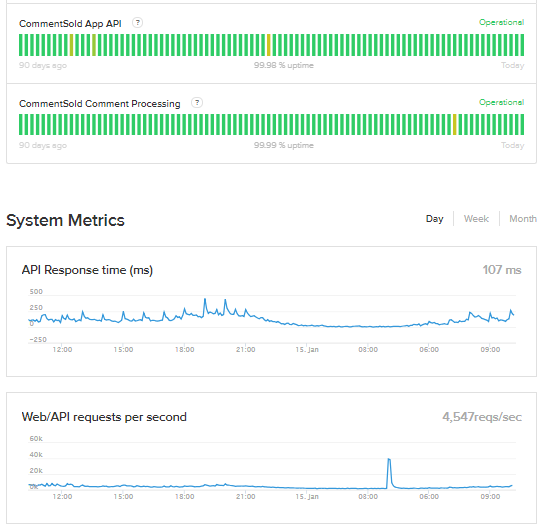Oh no! It’s happening. You’re having tech problems right in the middle of a sale. Like it or not, unexpected technical problems are a reality for every online business.
While technology typically streamlines the way we do business, it does it so well that we tend to take it for granted. Internal failures, natural disasters, human error, or issues with 3rd party applications can make operations come to a grinding halt. Lest we forget, technology is fallible.
The question is, how do you handle it when it happens? Don’t lose your head. There are ways to prepare and adapt for tech failure.
1. Be prepared before it happens

There’s no getting away from it- e-commerce systems are oftentimes complex. Most platforms have many integrations to perform different functions. Common integrations include payment processors, reviews plugins, social media networks, and customer relationship management technologies. When a page is loading slowly, or your live sale is crashing, it can be hard to detect what the source of the issue truly is.
Pinpointing tech problems starts with getting acquainted with the services you use. Sharpen up your knowledge about your e-commerce solutions by diving into their how-to articles. Not only will this familiarity help to diagnose common problems, but you may learn some tips and tricks to help you get better use from them.
Short on time? Check out the FAQ section or skim over their resource page. These pages cover common problems and how to fix them. This is also an excellent place to brush up on how to contact their support team should you need their assistance.
2. Stay calm & communicate with customers

A small glitch in a system may go unnoticed by customers, but sometimes a bug may involve loss of a shopping feature. The customer will likely report incidents like these before you find it yourself. Ask yourself how a professional would respond.
Although this may prove difficult in the moment, keep calm. Your customers will take their cues from you. If you are frustrated and upset, they will be frustrated and upset. Even if a third party is at fault, you are responsible for your customer’s experience. Apologize to them and let them know you will address the problem immediately.
If the issue is going to inhibit other customers, be sure to address it through one or more of your communication channels. Admitting to a problem and lending proof that you’re looking into a fix will lend you trustworthiness with your customers.
3. Check application statuses & troubleshoot Wi-Fi

A quick way to check the suspect application is to check their status pages. Most platforms have an application status page to inform you of problems with latency spikes, 3rd party integration bugs or instability, and other information about the health of the platform, websites, and integrations.
Of course, sometimes the a-ha moment happens when you discover that something is unplugged or the internet is down. Don’t forget to check for a decent, working internet connection via Wi-Fi or 3G or 4G, especially before running a live sale. You may be surprised that internet issues were the problem your website or livestream was running slowly all along.
4. Get help from a support member

If you’re unsure about a problem or how to fix it, contact support members for the platform that you suspect may be giving you trouble.
Support teams may need you to describe precisely what steps you took before encountering the problem so they can detect the issue quickly. If your customer reported the problem, be prepared to ask them if they can tell you the steps they took to get there. Incident reports like these usually expedite a fix because they help development teams understand your issue better.
Note that not all support is instantaneous for all services. While some can jump straight on a call or online chat with you, others may take a bit longer to get back to you by email. It is highly recommended you know your support channels before problems arise.
5. Direct users to another selling channel

The key to key to long-term online retail success relies on selling channel diversification. These extra channels not only give you extended brand reach, but they also serve as a fail-safe if ever you run into issues with another.
Sometimes the issue isn’t necessarily a bug or software downtime. It can also be an issue with finicky updates to social media networks that many businesses use to sell. This, along with many other reasons, gives retailers a strong push to use other avenues to sell. Whatever the case may be, directing your customers to another selling channel can be a quick fix to get back on track.
The Takeaway
Although tech issues are inherent concern for all online retailers, business owners looking to avoid the harsh blow of tech failure can only do three things: anticipate it, prepare for it, and adapt. Applying these tips and getting prepped should alleviate some concern and give you a leg up whenever problems arise.




